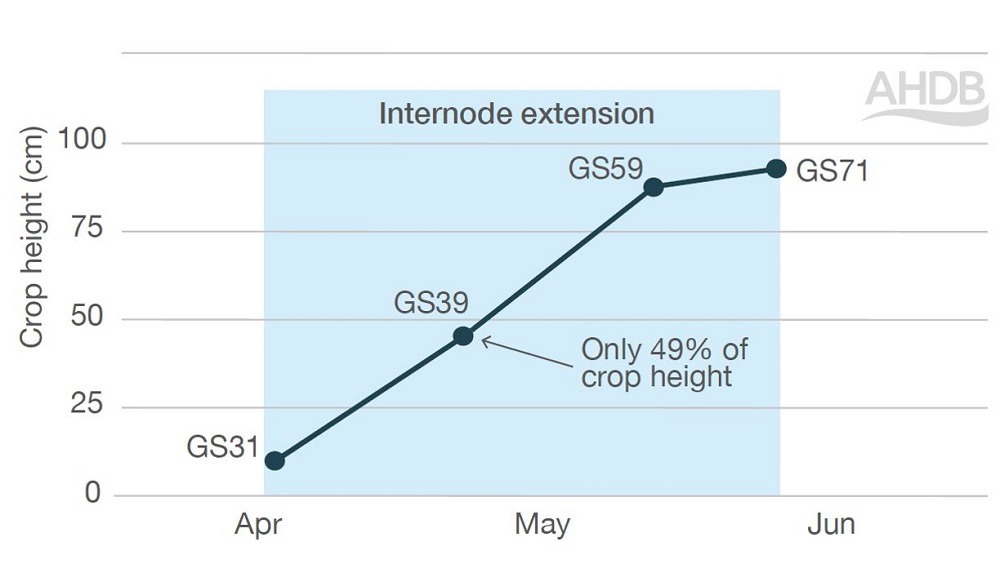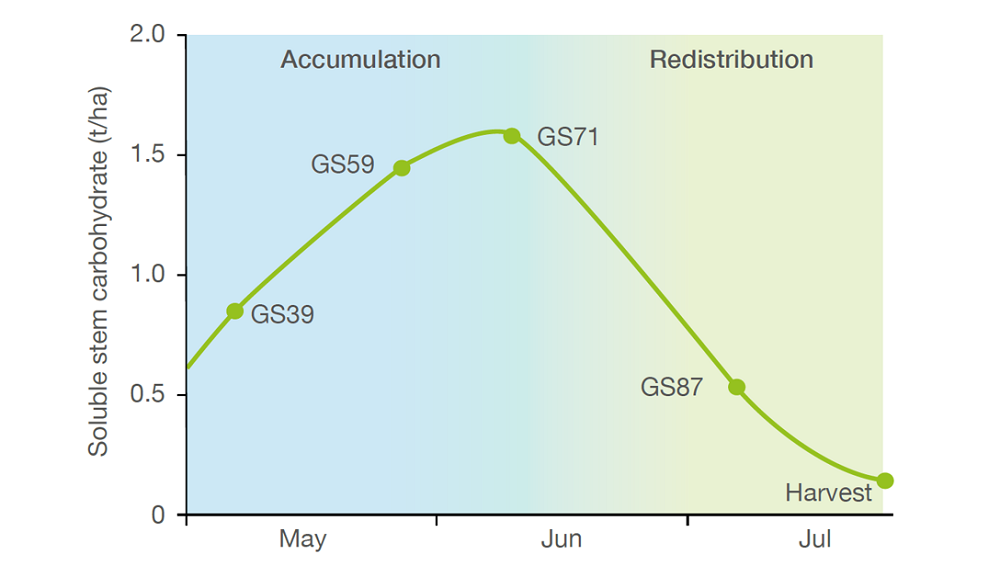- Home
- Knowledge library
- Measurement of stem extension and stem reserves in barley
Measurement of stem extension and stem reserves in barley
Careful management of cereals is essential to help the crop reach its optimum height and minimise lodging risks. Learn about the main-stem benchmarks and how stem reserves provide significant amounts of carbohydrates to filling grains.
Stem elongation and how to measure it
Benchmark: Nodes in extended stem = 4 (5 internodes)
Varietal influence: High
Other influences: Sowing date, PGRs, N supply
Benchmark: Final height (with PGR) = 93 cm North = 89 cm; South = 98 cm
Barley stem height is determined by the elongation/extension of the last five internodes.
- A node is the point at which a leaf sheath is attached to a stem
- An internode is the section of stem between two adjacent nodes
At GS39, barley reaches nearly half of its final potential height.
After GS59, only small increases in crop height occur.
 AHDB
AHDB
Spring barley
Spring barley varieties are 10–20 cm shorter than winter barley varieties. At flag leaf emergence, spring barley reaches only 57% of its final height.
How to measure stem elongation
Place a metre ruler on the ground. Measure stem height from soil level to the tip of the stem/collar of ear (the ear adds around 10 cm). Repeat for at least 10 shoots and take an average.
- Before GS39, measure the height of the main stem (largest stem)
- After GS39, measure any tiller
Lodging in cereals
In the UK, relatively widespread lodging of cereal crops occurs every few years. With potentially serious effects on yield and quality, it is important to understand and manage the risk to crops.
An introduction to lodging in cereals
Stem carbohydrate storage and how to measure it
Benchmark: Stem carbohydrate reserves at flowering = 1.6 t/ha
Varietal influence: High
Other influences: Plant population, N timing, fungicides
Stem carbohydrate reserves, mainly sugars (fructans), reach a maximum shortly after flowering (approximately nine days after GS59).
Crop management has a significant effect on the accumulation of reserves. Reserves are greater when N is applied at crop emergence and in crops grown at high seed rate and treated with fungicide. The effects are mostly the result of increases in stem biomass per ha, rather than the concentration of sugars in the tissue.
Grain fill depends on photosynthesis and stem reserves. Reserve redistribution/remobilisation, which begins after grain filling starts, accounts for a decrease of about 1.5 t/ha in dry stem weight between flowering and harvest. Stem reserves contribute 20–50% of total yield.
In stressed crops, stem reserves contribute a higher proportion. Reserves make a smaller contribution to yield where post-flowering canopy survival is good.
Taller crops have more structural stem material, but stem height does not reflect stem reserves.
|
Growth stages |
Stem dry matter (t/ha) |
Soluble stem reserve (t/ha) |
|
North |
||
|
GS39 (9 May) |
3.1 |
0.9 |
|
GS59 (30 May) |
5.7 |
1.3 |
|
GS71 (11 June) |
6.8 |
1.7 |
|
GS87 (14 July) |
5.3 |
0.4 |
|
South |
||
|
GS39 (3 May) |
3.1 |
0.8 |
|
GS59 (21 May) |
5.7 |
1.1 |
|
GS71 (5 June) |
6.9 |
1.8 |
|
GS87 (28 June) |
5.1 |
0.3 |
Spring barley
The amount of stem reserves accumulated by spring barley at GS59 is comparable to that of winter barley.
How to measure stem reserves
After stems are fully extended, pull up at least 10 stems (taking care not to break them) and remove leaf laminae, roots and ears. Dry the whole stems rapidly (at around 100°C), weigh them and send them for analysis by an appropriate laboratory. To determine the soluble stem reserves on an area basis, you will need to know the number of tillers in an area and multiply this by the Water Soluble Carbohydrates (WSC) per stem.

Topics:
Sectors:
Tags:

